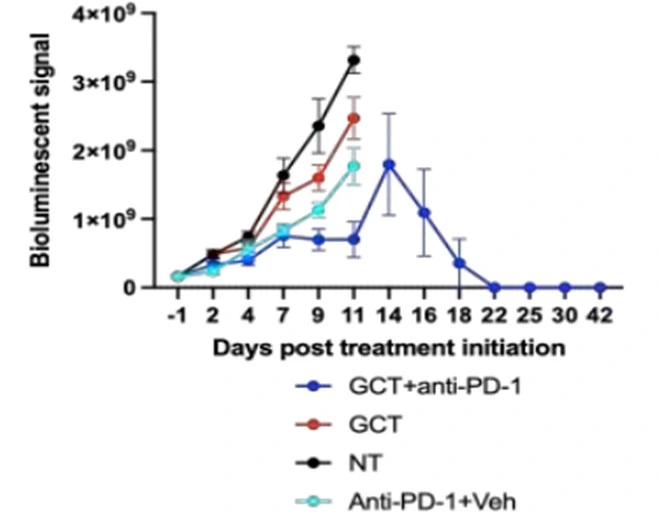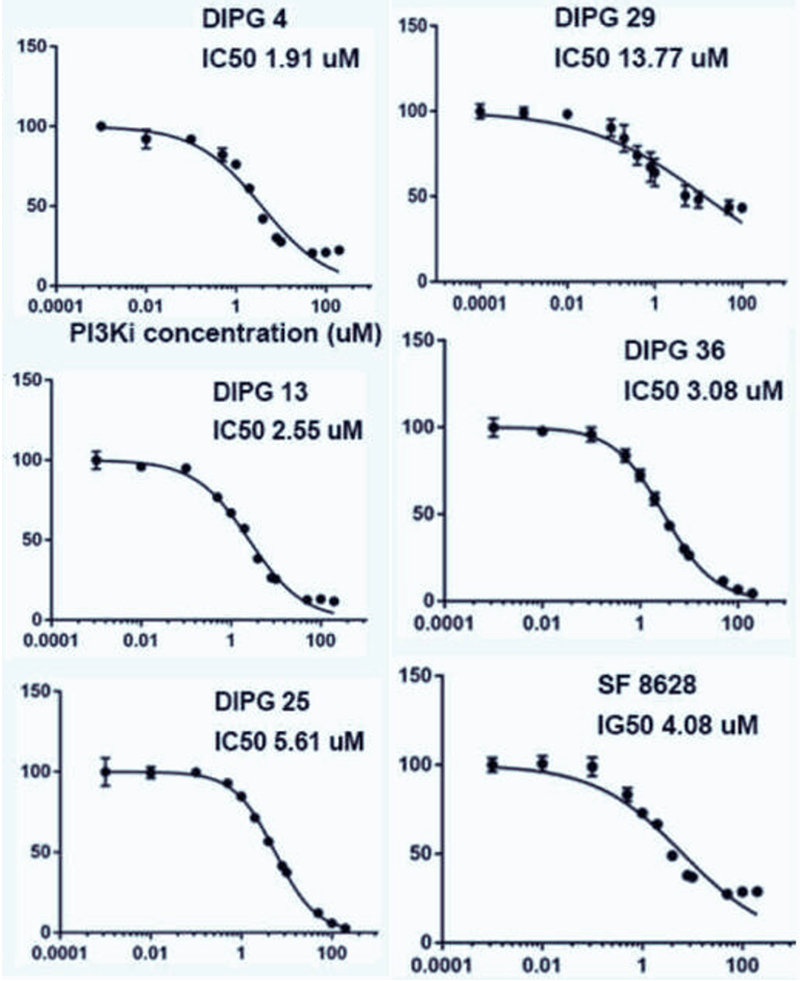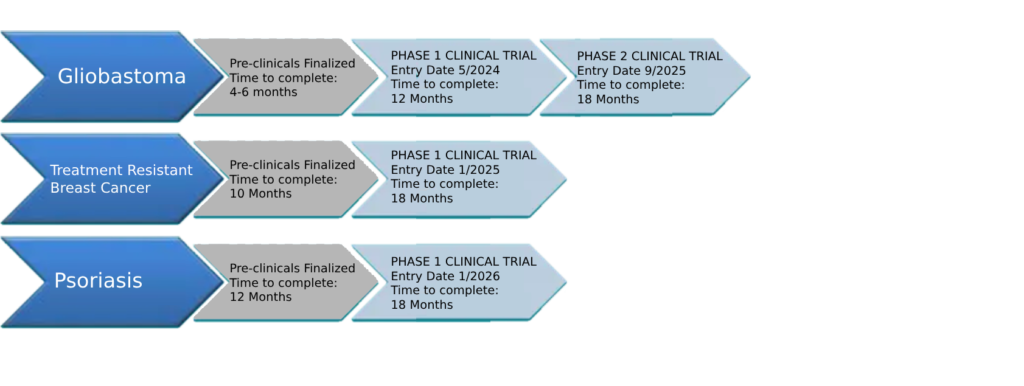Progress + Pipeline
Progress
In Gliobastoma
Our compound, GCT-007, has recently demonstrated significant growth arrest of glioblastoma cancer cells in preclinical trials in mice. The data below also show that the tumor masses disappear over time following exposure to our unique PI3K inhibitor.


In DIPG
We will continue additional trials using GCT-007 in DIPG Human cell lines.

Graphs show cell viability % for various DIPG cell lines when treated with GCT-007.
In Breast Cancer

In Psoriasis

The Company is also exploring the use of its second licensed compound, GCT-008, which is a potent, selective and orally bioavailable inhibitor of VPS34.
Trials Ahead

We have mapped out an anticipated timeline for our unique PI3K inhibitor based on results that we have collected in our preclinical laboratory studies. Based on initial findings, our unique compound appears to have inhibition potential to slow the onset – or potentially reverse – the development of cancer tumors in the brain (glioblastoma), in the breast (triple negative), and possibly even for the treatment of psoriasis.

The Company is also exploring the use of its second licensed compound, GCT-008, which is a potent, selective and orally bioavailable inhibitor of VPS34.
